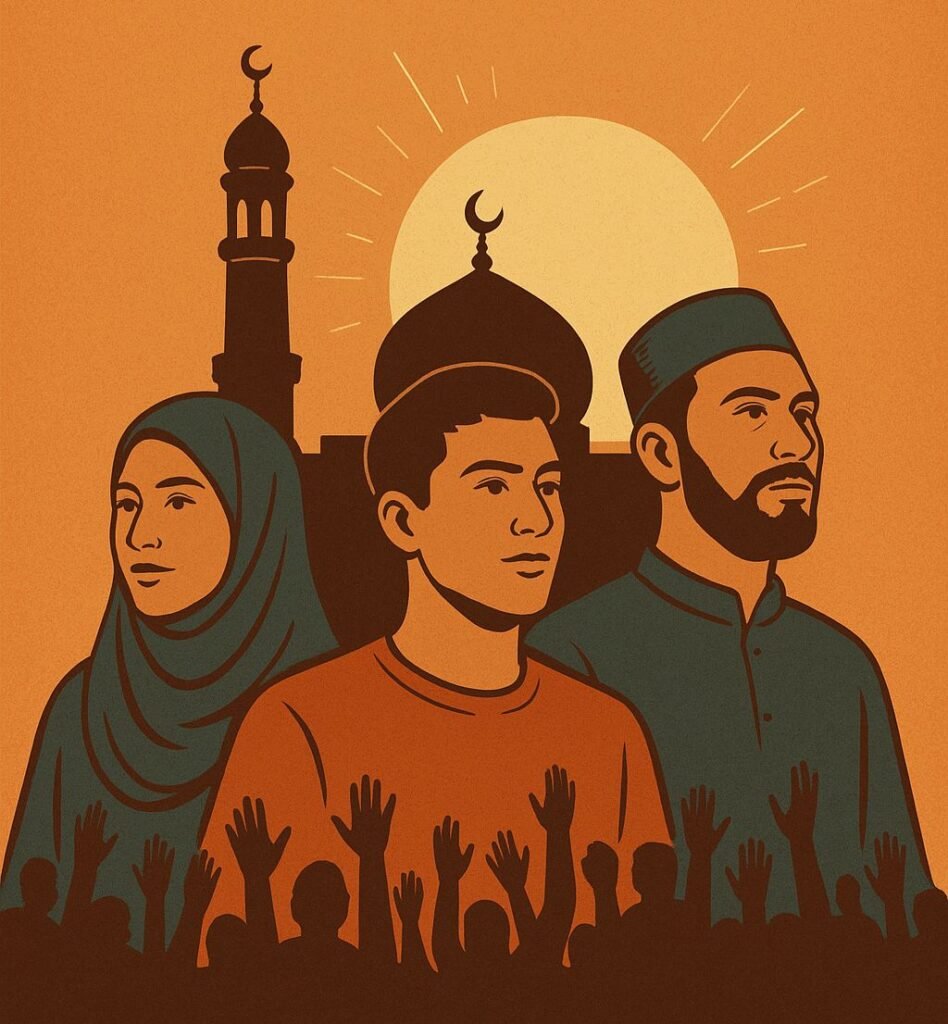
Aris Munandar S.Sos, Researcher Of IWDN Hub
Discourse on the revival of Islam in the 21st century is often marked by paradoxes. Muslims around the world face serious challenges in the form of prolonged conflicts, socio-economic disparities, and educational backwardness. However, at the same time, Islam is showing new vitality that is rooted in cultural values and community solidarity. In this context, cultural diplomacy and community resilience emerge as two important instruments that can pave the way for a peaceful, inclusive, and globally competitive Islamic revival.
Historically, Islam has proven itself to be a religion and civilization that has grown through cross-cultural interaction. From Andalusia to the Indonesian archipelago, the development of Islam took place not only through political power, but also through the dissemination of knowledge, architecture, literature, and trade networks. This was the early form of Islamic cultural diplomacy, which emphasized the exchange of values and harmony between civilizations. This legacy is relevant to be revived in the 21st century, when the world is looking for a model of civilization that can bridge differences without sacrificing identity.
Demographic data supports the importance of the revival of Islam. A report by the Pew Research Center (2023) shows that the number of Muslims in the world has reached nearly 2 billion, or about 24% of the total global population. This growth is projected to continue, with Islam potentially becoming the world’s largest religion by the middle of the 21st century. This potential is not only a matter of statistics, but also a cultural force that can shape the global order. In this context, cultural diplomacy can be a strategic medium for changing the world’s perception, which often associates Islam with conflict and radicalism.
Indonesia, as the country with the largest Muslim population, has played a significant role in Islamic cultural diplomacy. Through organizations such as Nahdlatul Ulama (NU) and Muhammadiyah, Indonesia brings the narrative of moderate Islam to international forums. NU, for example, actively promotes the idea of Humanitarian Islam, which emphasizes universal human values. Meanwhile, Muhammadiyah promotes education and health as the basis for soft diplomacy that shows the progressive face of Islam. The Indonesian government has also made moderate Islam an asset for global diplomacy, for example, through its active role in the G20, interfaith dialogue, and contributions to climate change issues. All of this shows how Islam can be present not as a threat, but as a partner for world civilization.
However, the resurgence of Islam is not only determined by cultural diplomacy on the global stage. Community resilience is also an important foundation, especially for Muslim communities living in post-conflict areas. A study conducted by the UNDP (2022) found that community recovery in Syria, Iraq, and Afghanistan depends not only on physical reconstruction, but also on the restoration of cultural symbols such as mosques, madrasas, and community centers. The restoration of these symbols plays a major role in strengthening social cohesion and restoring collective identities that were fragmented by conflict. In other words, the rise of Islam begins at the grassroots level, with communities rediscovering meaning and hope through symbols of togetherness.
From a theoretical perspective, this approach can be explained through the concept of civilizational resilience. Samuel Huntington, although often viewed as controversial, acknowledges that Islam is one of the great civilizations that has been able to survive historical upheavals. Contemporary studies in resilience studies emphasize that a community is able to survive not only because of material strength, but also because of cultural adaptability, social networks, and the ability to build shared meaning. Islam, with its tradition of social solidarity—from zakat (alms) and waqf (endowments) to mutual assistance—has a strong foundation for building community resilience in the global era.
Concrete examples can be found in various parts of the Islamic world. In Palestine, local communities maintain their identity through the preservation of mosques, schools, and religious traditions despite living under pressure. In Bosnia, mosques and cultural centers destroyed by war have been restored as symbols of the revival of European Muslim identity. In Indonesia, Islamic boarding schools have become resilient spaces capable of producing new generations despite the tide of digital globalization. All of this shows that community resilience is not just about survival, but also the ability to rise stronger and more relevant to the times.
Thus, the revival of Islam in the 21st century cannot be viewed solely from a political or economic perspective. Rather, what is more decisive is cultural strength and social resilience. Cultural diplomacy presents a moderate, friendly, and inclusive image of Islam on the global stage. Meanwhile, community resilience ensures that Muslims at the grassroots level have the resilience to face crises and rebuild their lives. The two complement each other: cultural diplomacy builds a positive image externally, while community resilience strengthens the foundation internally. The 21st century can be a momentum for the revival of Islam if these two approaches continue to be pursued consistently. Islam can once again appear not as an object of negative discourse, but as a subject of civilization that provides solutions. The challenges of the modern world, ranging from identity conflicts and global inequality to climate change, require the contribution of universal Islamic values such as justice, solidarity, and compassion. If cultural diplomacy and community resilience are adopted as a joint strategy, Muslims can respond to the stigma of decline and instead offer hope to a world plagued by uncertainty.